Acting Like a Flamingo Strengthens Bones + More MD-Backed Ways to Ward Off Osteoporosis
Permission to spend more time with friends: doing so boosts bone health
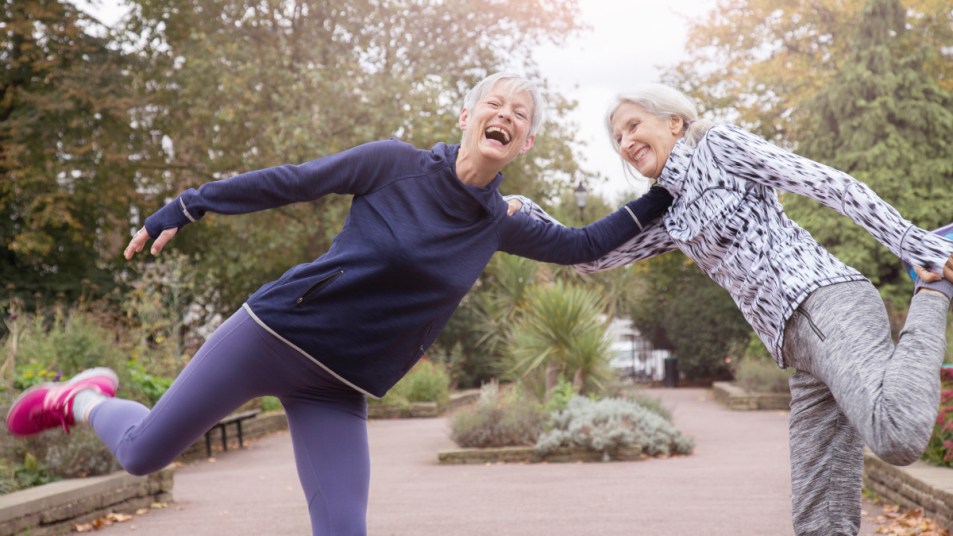
Here’s a startling stat: One in two women will reach one of the stages of osteoporosis, a progressive condition where your bones become weaker and more likely to break, in their lifetime. And menopause is the #1 culprit.
“Women over 50 are at higher risk for osteoporosis,” says Zeba Faroqui, MD, a rheumatologist at Long Island Osteoporosis & Arthritis in Plainview, NY. While medications are typically needed to manage the condition, the good news is that “healthy lifestyle and habits can protect bone health,” she adds.
And that’s the case whether your bones are still relatively strong or you’ve already been diagnosed with one of the stages of osteoporosis. That’s why we’ve rounded up doctors’ seven best natural bone-bolstering strategies to try. Happily, they couldn’t be easier!
Osteoporosis risk rises after age 50
Simply being a woman puts you at higher odds for osteoporosis. More than 80% of Americans with the condition are female. “We know that women have lower body weight and lower body mass,” which predisposes them to lower bone mineral density, explains Kristi Tough DeSapri, MD, Founding Physician and Director of Bone and Body Women’s Health in Winnetka, IL.
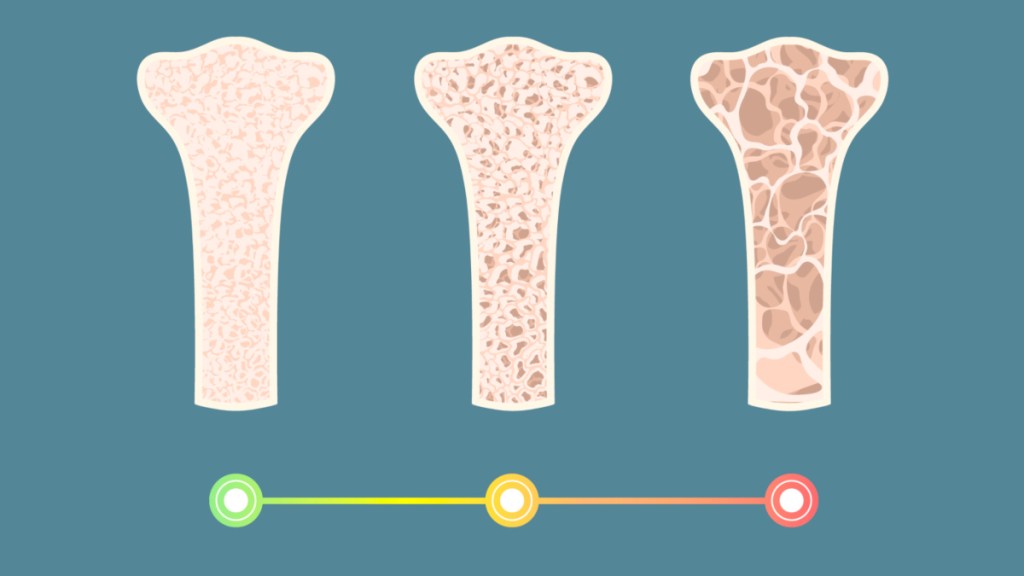
And the older you get, the greater your osteoporosis risk. In fact, women lose 10% of their bone density during menopause. “As menopause approaches, the reproductive system starts to decline,” Dr. Faroqui says. “Ovaries produce less estrogen, a key hormone that stimulates bone growth. Without estrogen, there is more bone loss than bone formation.” This causes bones to become weaker and more brittle. (Learn how seed cycling for menopause can help balance your hormones.)
How the stages of osteoporosis are diagnosed
Bone mineral density tests check the strength of your bones to see if you are in the stages of osteoporosis or are on the path to develop it in the future. They’re recommended for everyone 65 and older. You and your doctor should determine the frequency based on your individual risk factors. You may need to get tested earlier if you’re between 50 and 65 and have already had a fracture or have a family history of osteoporosis.
The most common bone mineral density test is a DXA or DEXA scan. This special type of X-ray measures how much calcium and other minerals are in your hip and spine bones (which are most prone to fracture). The fewer minerals your bones have, the weaker they are. The scan is usually done at an X-ray center and typically takes less than 20 minutes. (See the home osteoporosis test that can signal it’s time to visit your doctor.)
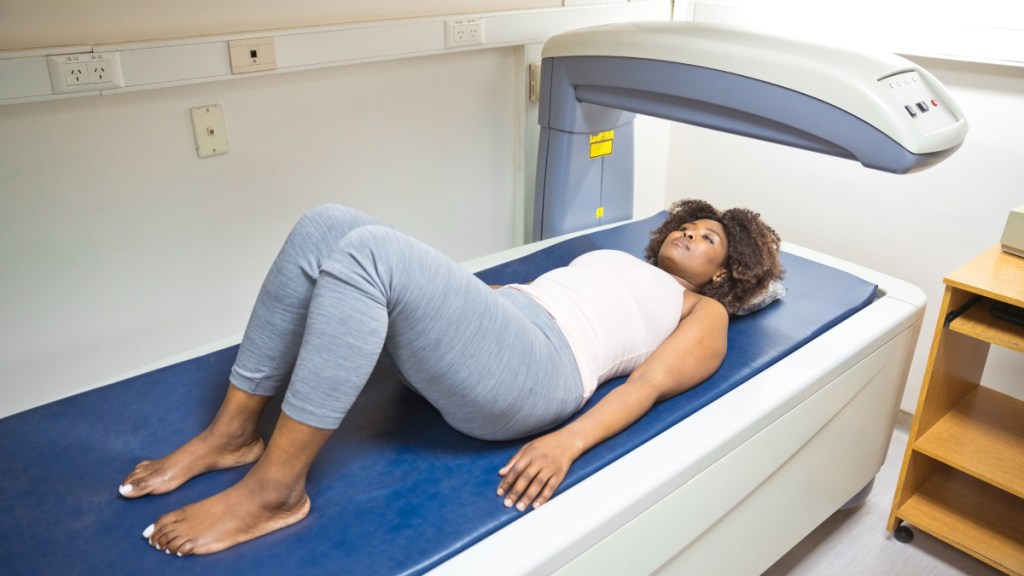
Stages of osteoporosis
Your DEXA scan tells you your T score. This compares your bone density measurement to the bone density of a healthy young adult. The lower your score, the higher your risk. Here’s a quick look at the three stages of osteoporosis:
- Stage 1: A reading of -1 or higher means your bones are healthy with a normal fracture risk.
- Stage 2: A reading of -1 to -2.5 means you have osteopenia, or low bone mineral density. This indicates you may develop osteoporosis in the future.
- Stage 3: A reading of -2.5 or lower means you have osteoporosis.
Having osteopenia or osteoporosis greatly increased your risk for harmful bone fractures, and it can worsen when left untreated. But no matter your T score, you’re not doomed. Lifestyle changes and medications can help “build back some bone and prevent more bone from being lost,” Dr. Tough says. This goes a long way toward preventing broken bones. (Learn how bolstering your bones can help ward off a pulled muscle in your back.)
Stages of osteoporosis: How to strengthen your bones
Whether you’ve been diagnosed with one of the stages of osteoporosis or your bones are still healthy, there are easy ways to keep them as sturdy as possible. Here’s what Dr. Tough and Dr. Faroqui recommend.
1. Sip a protein smoothie
Start your day with a smoothie made with low-fat milk, a handful of fresh fruit (like berries or a banana) and a scoop of protein powder, recommends Dr. Faroqui. It’s an easy way to get bone-boosting nutrients like calcium and vitamin D. Plus it helps you sneak in more protein, which is key for strong bones.
“Having enough protein increases bone mineral density, slows the rate of bone loss and decreases hip hips fracture rates,” Dr. Tough notes. Experts recommend getting 1 gram of protein per kilogram of body weight for bone health. For a 150-pound woman, that’s around 68 grams of protein daily. (See how tossing jackfruit into your smoothie bolsters bones, too.)
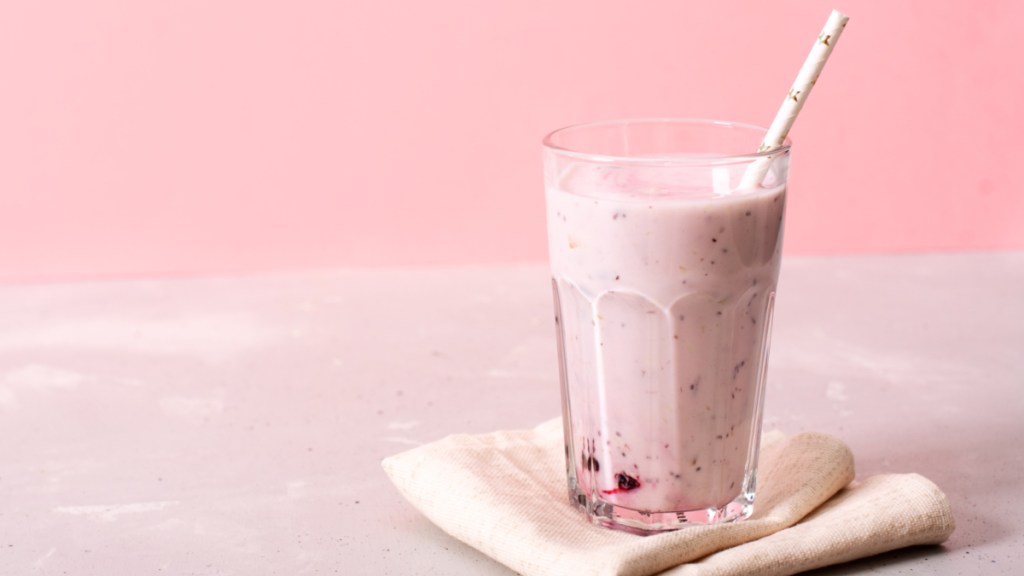
2. Tour your neighborhood
Whenever you can, sneak in a quick walk during a work break or a stroll around the block after dinner. Enjoying a 30-minute jaunt three times a week boosts your bone mineral density, research in PLoS One shows. Walking is a weight-bearing exercise, “which stimulates the formation of new bone,” Dr. Tough explains.
Also smart: Set reminders on your phone to get up and move around for a few minutes every hour or two. Why is that so important? Women who sit for more than 9 hours per day are 50% more likely to sustain a hip fracture compared to those who sit 6 hours per day or less.
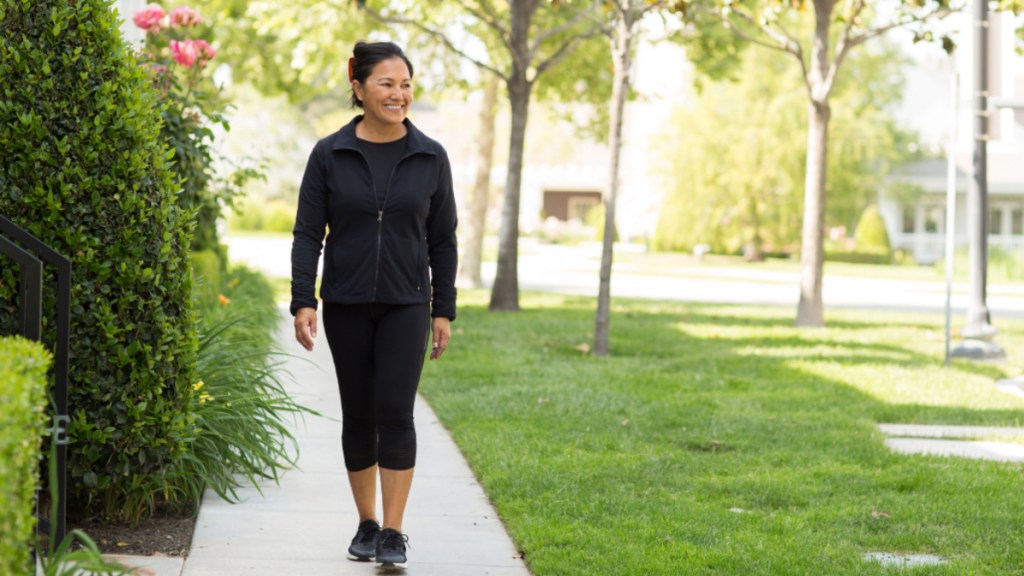
3. Act like a flamingo
Balance exercises help you stay steady on your feet. As a result, you’re less likely to wobble and sustain a possible fracture. Work them into your everyday routine by acting like a flamingo. The next time you’re in the checkout line at the grocery store, try balancing on one leg for 30 seconds, Dr. Tough suggests. You can adapt the move based on your fitness level. Hold onto your cart with two hands for the most stability, or use one hand for a little less. For the greatest challenge, try going totally hands-free!
4. Strike a yoga pose
Got 12 minutes? Practice a few yoga stretches, recommends Dr. Tough. Doing yoga for that amount of time each day was enough to reverse bone loss in patients with osteoporosis, found a study in Topics in Geriatric Rehabilitation. Similar to walking, yoga uses your own body weight to put resistance on your bones, which helps make them stronger, Dr. Tough explains. If you’re new to yoga (or simply need some inspiration), check out the video below for 12-minute class.
5. Snack on trail mix
To satisfy your tastebuds while protecting your bones, toss together a trail mix that includes some almonds and prunes. Eating five to six prunes per day was enough to help postmenopausal women preserve bone mineral density in their hips, which helps stave off fractures, found a study in the American Journal of Clinical Nutrition.
Credit goes to bone-friendly nutrients like vitamin K and potassium found in the fruit. And as for almonds? Dr. Faroqui says they’re a good source of calcium and protein, both of which keep bones strong. (See more of the best foods to prevent bone loss and how much omega 3 per day you need to ward off osteoporosis.)
6. Find a bone health buddy
Team up with a pal who’s interested in boning up her bones, too. Having a close social network slashes your osteoporosis risk, a study in Bone Abstracts found. “People may be surprised to know that just by finding an accountability partner or group, you can improve your bone health,” Dr. Faroqui says. “Create a routine together that you can both follow and check in with each other to stay on track. Work on implementing one change at a time.”
For instance, you can start off by planning to eat one more calcium-rich food each day (like cottage cheese or yogurt). Once you’ve both got that down, commit to adding in a daily walk. Then try building a yoga break into your day, too.
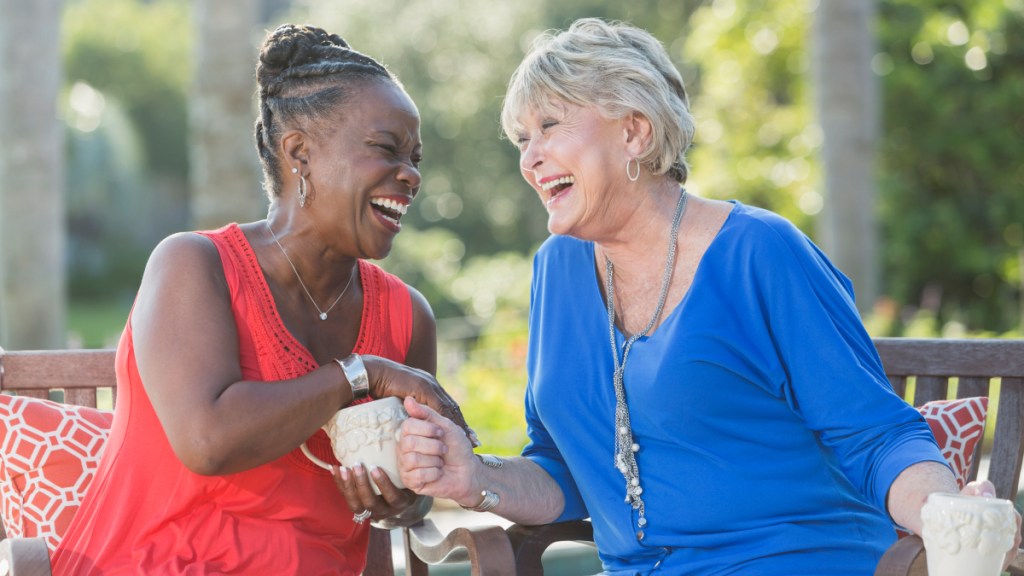
7. Swap a nightcap for an OJ mocktail
Looking to unwind with an after-dinner drink? Consider swapping your glass of wine for fun mocktail. Combining vitamin D-fortified orange juice with a splash each of cranberry juice and sparkling water bolsters your bones with every sip.
“Excessive alcohol increases bone breakdown,” Dr. Tough says. “It can also increase the risk of falling,” by impairing your balance. How a mocktail can help: The vitamin D in fortified OJ supports sturdy bones by helping your body absorb more calcium. (Not a fan of orange juice? See the best vitamin D supplements for women over 50.)
Stages of osteoporosis: When to consider medication
Lifestyle changes go a long way towards protecting your bones. But it’s also important to talk with your doctor about your osteoporosis risk and to decide if you’d benefit from drug treatments to prevent further bone loss and build new bone. That’s especially true if your T score is -2.5 or lower and you’ve been diagnosed with osteoporosis, agree Dr. Tough and Dr. Faroqui. “We know our therapies can reduce fracture risk by up to 80%,” Dr. Tough adds.
For more ways to keep your bones strong and healthy:
Doctor’s Best Natural Ways to Strengthen Bones So You Avoid Osteoporosis Drugs
MDs Reveal The 6 Best Foods For Bone Health — Plus The One Drink You’d Never Expect
This content is not a substitute for professional medical advice or diagnosis. Always consult your physician before pursuing any treatment plan.













